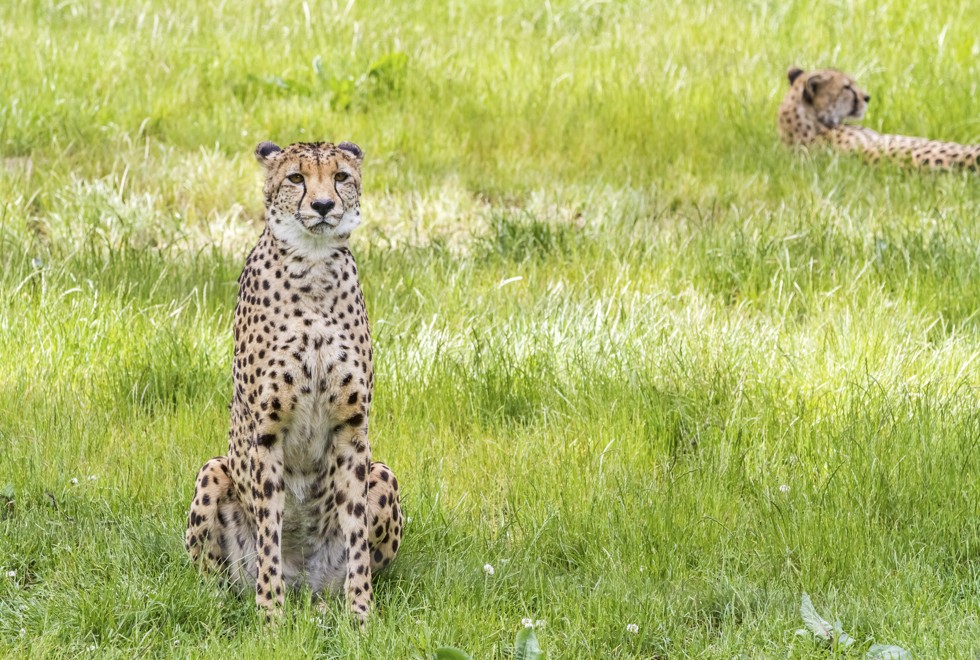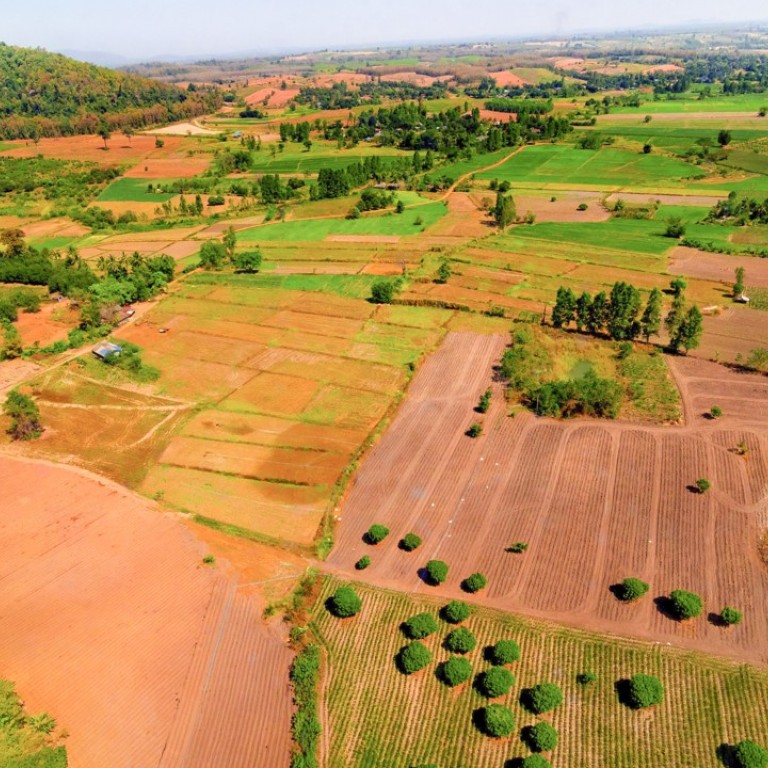
How world’s farmland is shrinking, and why it could be a good thing
In China and across the globe, cropland and pasture is shrinking for the first time on record, thanks in part to consumer choices. What does this mean for the environment and the future of food?
It’s an odd juxtaposition that’s popping up in far-flung places around the world. Across the hilly regions of China, the scars of agriculture are being covered by a messy mix of trees and shrubs. In parts of Iran, Australia and Kazakhstan, wild animals are reclaiming swathes of abandoned pasture. And in Portugal, Chile and Argentina, abandoned farms serve as lifelines that connect fragments of intact wilderness.
The landscapes might be different but all are evidence of a startling new trend. For the first time in recorded history, the world’s farmland is shrinking. Every two years, an area roughly the size of Britain is abandoned. Has humanity’s insatiable land grab reached a turning point? And can we take this opportunity to build a world in which farming has a smaller footprint, and where nature can rebound from the toll we have inflicted upon it?
For most of the 20th century, agriculture spread out. By the 1990s, farming occupied 38 per cent of the world’s land surface. The impact on ecosystems is well documented: 27 per cent of tropical forests and 45 per cent of temperate forests were cleared in the process.
Deforestation is still occurring at a rapid rate in the tropics, making way for cattle, palm and soya, but drawing on recent data from the Food and Agriculture Organisation of the United Nations, research shows that a different trend is emerging elsewhere. The total area of cropland and pasture is now shrinking. This is particularly true in temperate areas and drylands, but also in some parts of the tropics. This century, more land has been left to return to nature worldwide than has been cleared.
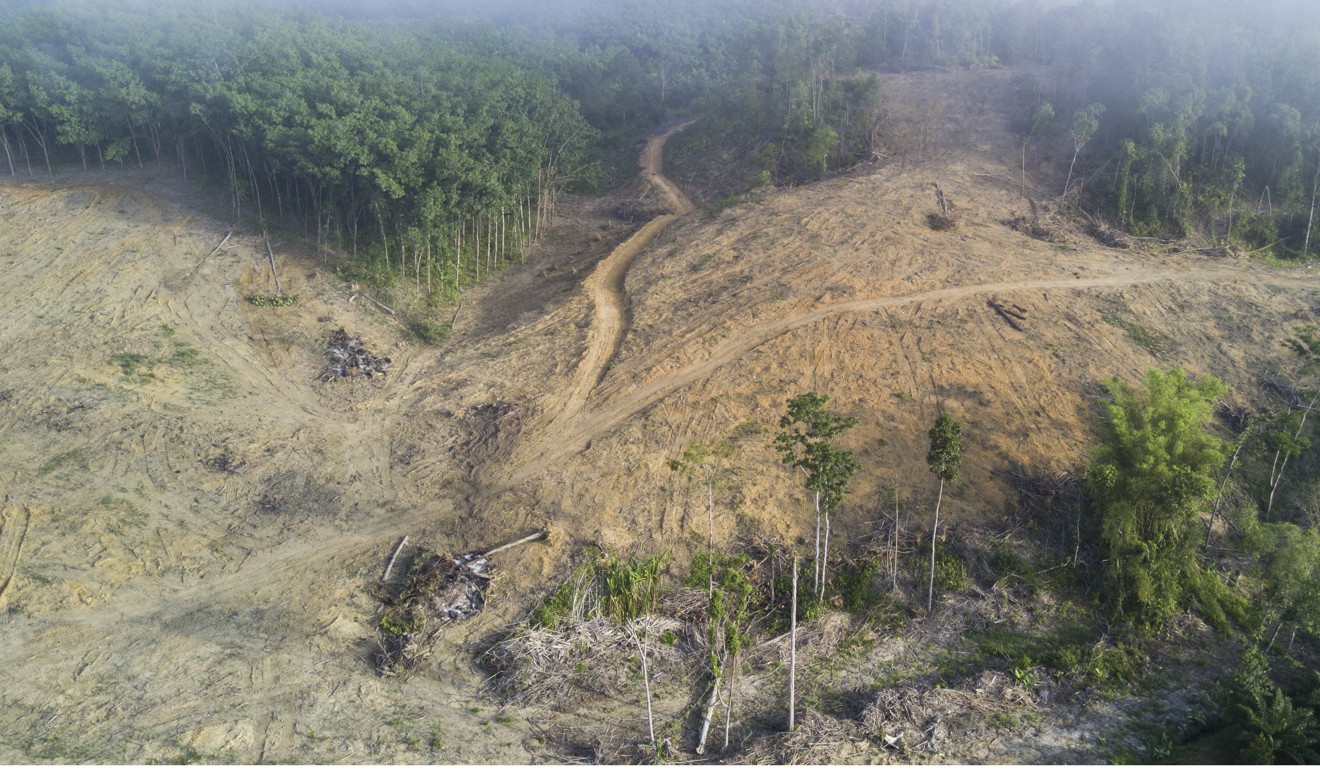
Among the factors driving the trend are the choices we make as consumers. We rarely think about it while we are shopping, but choosing cotton or synthetics over wool, for instance, has far-reaching consequences.
Globally, demand for polyester rose fourfold during the 1990s, and wool demand fell by 40 per cent. Wool prices collapsed. Sheep farmers around the world, particularly those who were on degraded pasture or couldn’t diversify, abandoned their farms. In Australia and New Zealand, two major wool-producing countries, more than 60 million hectares of pasture have been abandoned since 1990. The trend continues today.
For the first time in recorded history, the world’s farmland is shrinking. Every two years, an area the size of Britain is abandoned.
The switch away from wool has transformed vast areas. Take southwest Australia, for instance – home to the world’s largest Mediterranean woodland of fragrant eucalyptus, dry sandy heaths, wet forests and swamps harbouring rare, colourful cockatoos, carnivorous marsupials and unique amphibians such as the sunset frog. Eighty-nine per cent of its land was once cleared for crops and for pastures, to sate the booming wool trade. Now, consumer preferences for cotton and synthetic fabrics, and clever manoeuvring by conservation organisations, are driving change.
Northeast of Perth, White Wells Station was once a 69,000-hectare sheep farm. The area is not ideally suited to farming, with its dense shrubs and poor water supply, so the farm quickly became unprofitable when wool prices collapsed.
In 2003, conservation charity Bush Heritage Australia saw an opportunity to purchase a property that still had ecological value. It removed the last stray sheep, reduced introduced species and renamed the farm the Charles Darwin Reserve. Today, it is an island of natural vegetation traversing various biogeographical regions, with salt lakes, old river systems, open acacia shrublands and eucalyptus forests – a sanctuary for almost 700 species of plants and 230 species of animals, including the threatened malleefowl and the shield-backed trapdoor spider.
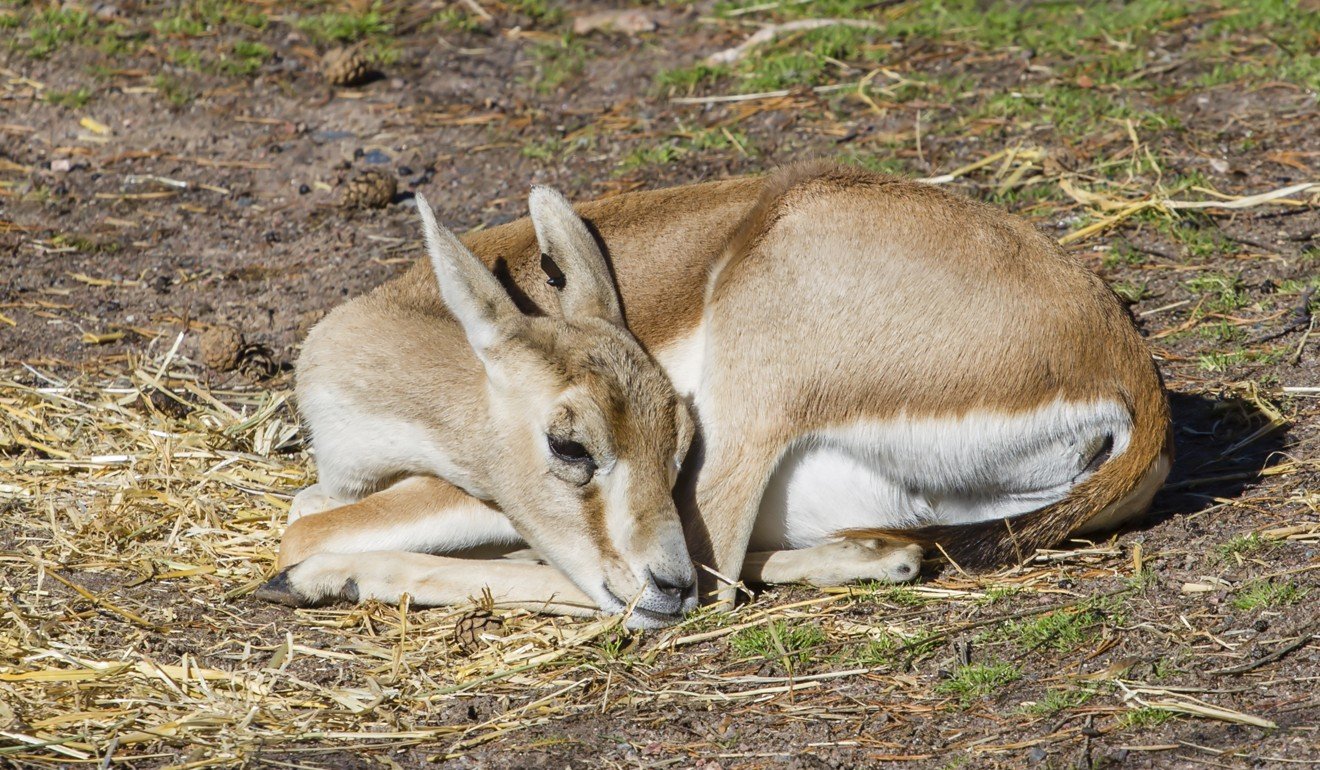
In northeast Iran, abandoned pastures have given two species a new lease on life. The region is one of the last known refuges of the Asiatic cheetah, where a population of fewer than 40 individuals is hovering on the brink of extinction. Years of hunting and expanding agriculture have contracted and fragmented their range, but the tide is turning.
“Reduced grazing and pasture abandonment are becoming evident on the ground in parts of Iran,” says Mohammad Farhadinia, co-founder of the Iranian Cheetah Society. In Miandasht Wildlife Refuge, a critical area for the cheetah, livestock numbers have fallen from 50,000 in the ’90s to below 15,000 today.
This has allowed another local species, the Persian gazelle, to make a recovery. In Miandasht alone, gazelle numbers have risen from fewer than 300 in the early 2000s to an estimated 1,300 today. The cheetah preys on the gazelle, raising hopes that it too will recover.
To this end, the Iranian Cheetah Society is working with the Iranian Department of Environment to buy inexpensive abandoned land and turn it into national parks. Greater awareness and anti-poaching enforcement are urgently needed to make the most of the opportunity.
Iran is a classic example of intensification. As in Mongolia and other Central Asian countries, pastoralists who eked out a living off land that provided minimal incomes have migrated to urban areas. Meanwhile, intensive systems elsewhere are occupying significantly less land to deliver the same amount of protein.
Of course, intensive farming comes with its own environmental burden, such as fertiliser run-off into rivers and lakes and increased use of pesticides. But Miandasht shows another side to the ecological story. One estimate suggests that globally, farmland intensification saved 27 million hectares from being cleared between 1965 and 2004.
With careful planning, some of the environmental costs of intensification can be managed. Precision farming, for example, uses information on soil, the climate and crops’ potential to absorb nutrients to calculate the exact amount of fertiliser needed. Pesticide use can be curbed by practising integrated pest control, which mixes mechanical tools such as traps with biological controls that include natural predators.
There are major animal-welfare concerns about intensive livestock farming – particularly issues arising from confinement, breeding for short, productive lives and the use of hormones. Options to boost efficiency and improve welfare are lacking, and the only real solution may be to radically change our diets.
Perhaps one of the last century’s most significant changes in land use came with the collapse of the Soviet Union. Collective farms broke down, machinery and livestock were sold off, and marginal agriculture, dependent on state subsidies, quickly became unprofitable. Farm workers moved into cities, abandoning 45 million hectares of cropland and a large but unknown amount of pasture.
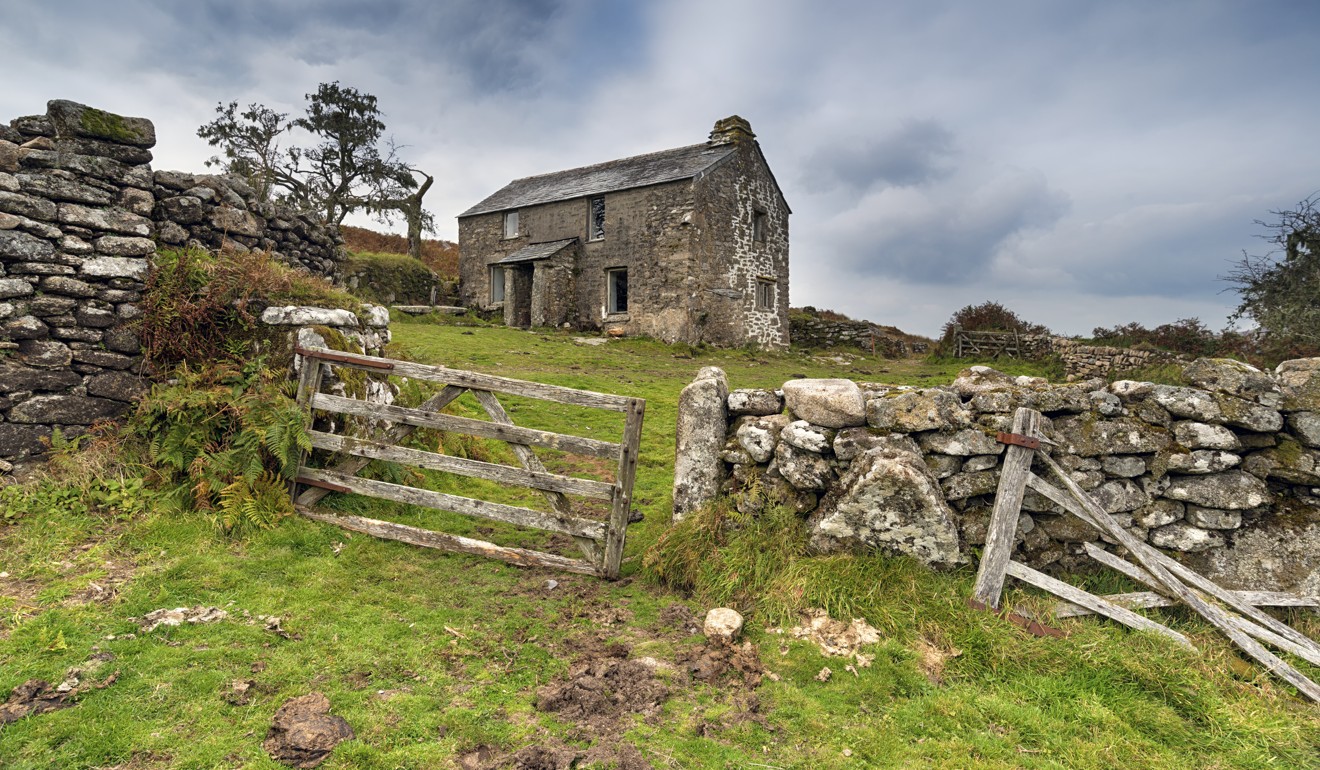
In the immediate aftermath, it looked as though wildlife would suffer. The saiga antelope’s prized horns became a key source of income for local people, and hunting drove numbers to critically low levels. The sociable lapwing, an endangered bird that migrates from the Middle East to the grass steppes of Central Asia, also suffered: it depends on grazed grass to nest and eats the insects attracted to the saiga’s manure.
A team from Britain’s Royal Society for the Protection of Birds (RSPB) and Frankfurt Zoological Society saw a unique opportunity to protect two species. Working with the government of Kazakhstan they created a sanctuary of five million hectares centred on the saiga’s migration range in an area called the Altyn Dala.
“There was room to manoeuvre because people had left the area, and the newly formed government was able to develop effective regulations,” says E.J. Milner-Gulland, chair of the Saiga Conservation Alliance. Coupled with anti-poaching enforcement and monitoring, the move saw the antelope population make a remarkable recovery. They currently number about 150,000, up from 21,000 in 2003.
The lapwing’s breeding success has also improved, according to the RSPB. Unfortunately, the birds now face another challenge: they are being poached at their wintering grounds in Kuwait. Nonetheless, the example of Kazakhstan shows that smart policies can turn farmland abandonment into good news for the environment.
For most governments, however, concerns over food security mean abandonment is seen as a negative and policies are designed to avoid returning farmland to nature. Under the European Union’s Common Agricultural Policy, for instance, farmers are paid for each acre of land maintained in farming condition – even if it is unprofitable. And in Western Australia, the Land Administration Act makes it difficult for farmers to derive income from sources other than livestock.
Policies such as these were born out of an era when a greater area of land under cultivation signified a better safeguard against famine. With higher-yield farming and more international trade, they are increasingly in need of revision.
In Australia, there are calls for change. Partnership for the Outback, run by a number of NGOs, including Bush Heritage, is seeking new legislation that would allow farmers to earn income from tourism or environmental stewardship. They want conservation to be recognised as a valuable and economically viable use of land in its own right.
“There is a huge opportunity for proactive conservation agencies to help restore marginal and abandoned lands,” says Luke Bayley, of Bush Heritage. This may mean restoring ecosystems or redesigning farms to protect biodiversity. “Another critical element of conservation is the ability to bring families back into the landscape, create economic opportunities and engage regional people.”

Indeed, in order for conservation to succeed, it often has to deliver benefits for people.
In Portugal’s Côa Valley, upland farming was gradually abandoned after it became uncompetitive. Farmers needed a financial way out, and conservation organisations provided one by purchasing their land when no other buyer was in the market. For those looking to stay, opportunities emerged with tourists, drawn by the pristine valleys and sightings of returning deer, wolves and black vultures.
In 2014. I witnessed the benefits of novel policies first-hand when undertaking research in Lanzhou, Gansu province. The booming city was at the heart of a Grain for Green area, a subsidy programme that has invested more than US$60 billion to revegetate 32 million hectares since 1999 in an effort to alleviate poverty and restore ecosystems. Responding to flooding, soil erosion and desertification, the government paid farmers on sloping land to plant trees, shrubs and grasses.
The farms were hard to mechanise. Their low yields often provided subsistence-level incomes. But the new subsidies allowed farmers to migrate to cities or derive greater off-farm income. Improving the biodiversity of these regions will take a great deal more work, but already household incomes have risen in almost all areas under the programme.
These examples of shrinking farmland present a narrative in which the return of low-productivity land to natural ecosystems is a positive change. They paint a picture of a new agricultural system, where we embrace high-yield technologies, where we don’t keep unproductive farmers producing and where we, as consumers, avoid products that use large areas of land.
The beginning of this century could mark the turning point at which we began to share more, not less, of our planet with the other species that inhabit it.
New Scientist
Nature trials
Figuring out whether global biodiversity has benefited or suffered from agricultural abandonment is not easy. Intensive farming can degrade local ecosystems but it spares land elsewhere. The same drivers that are opening up farmland for conservation in temperate regions – consumer choice and international trade – have also caused deforestation in tropical countries.
The shift towards cheap palm oil, for example, has driven extensive deforestation in Indonesia and Malaysia at the expense of their unique wildlife. And studies show that following abandonment, farmland is temporarily more prone to drought and fire.
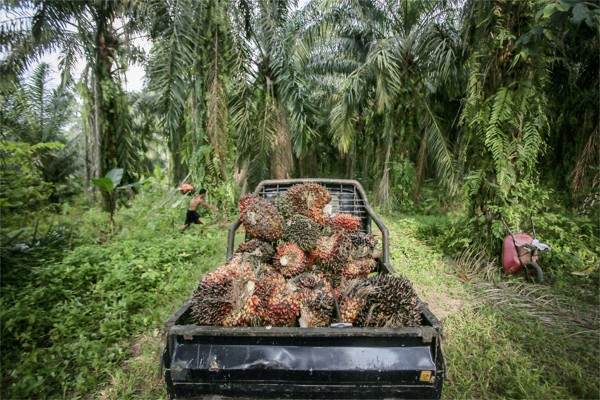
Not least, regenerating ecosystems can rapidly become carbon sinks: land abandoned after the collapse of the Soviet Union has stored away 158 million tonnes of carbon dioxide a year, equivalent to about 14 per cent of China’s annual emissions. New Scientist
The future is vegan
Could changes in what we eat release more land from agriculture? Animal products use significantly more land than vegetable equivalents to deliver the same amount of nutrition. To make 100 grams of beef protein requires between 20 and 250 square metres of land per year, chicken requires two to six square metres and tofu one to two square metres. A litre of soya milk uses less than 0.5 square metres; animal milks require more than twice that area.
A global transition to vegan diets would remove all pasture – two-thirds of the world’s agricultural land. The extent of cropland would shrink, because many animals are fed on crops that humans can eat. They consume three to 20 times the amount of protein that they return for human consumption. If everyone became vegan, the extent of arable land would shrink by 20 to 40 per cent andthe majority of agricultural land would be released from production, freeing up huge areas for wildlife. New Scientist

